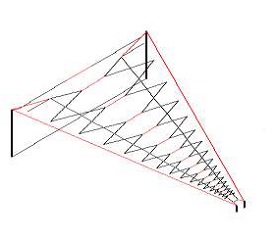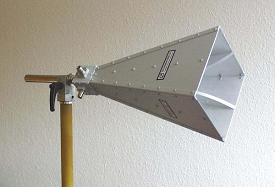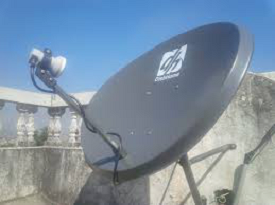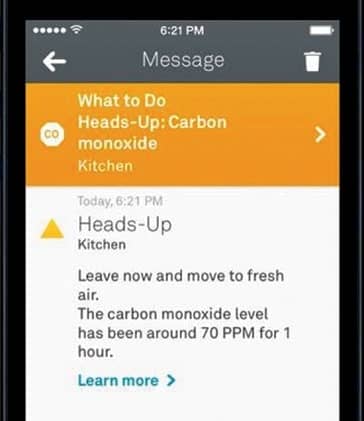Power Systems
We know that the satellite present in an orbit should be operated continuously during its life span. So, the satellite requires internal power in order to operate various electronic systems and communications payload that are present in it.
Power system is a vital subsystem, which provides the power required for working of a satellite. Mainly, the solar cells (or panels) and rechargeable batteries are used in these systems.
Solar Cells
Basically, the solar cells produce electrical power (current) from incident sunlight. Therefore, solar cells are used primarily in order to provide power to other subsystems of satellite.
We know that individual solar cells generate very less power. So, in order to generate more power, group of cells that are present in an array form can be used.
Solar Arrays
There are two types of solar arrays that are used in satellites. Those are cylindrical solar arrays and rectangular solar arrays or solar sail.
- Cylindrical solar arrays are used in spinning satellites. Only part of the cylindrical array will be covered under sunshine at any given time. Due to this, electric power gets generated from the partial solar array. This is the drawback of this type.
- The drawback of cylindrical solar arrays is overcome with Solar sail. This one produce more power because all solar cells of solar sail are exposed to sun light.
Rechargeable Batteries
During eclipses time, it is difficult to get the power from sun light. So, in that situation the other subsystems get the power from rechargeable batteries. These batteries produce power to other subsystems during launching of satellite also.
In general, these batteries charge due to excess current, which is generated by solar cells in the presence of sun light.
Antenna Subsystems
Antennas are present in both satellite and earth station. Now, let us discuss about the satellite antennas.
Satellite antennas perform two types of functions. Those are receiving of signals, which are coming from earth station and transmitting signals to one or more earth stations based on the requirement. In other words, the satellite antennas receive uplink signals and transmit downlink signals.
We know that the length of satellite antennas is inversely proportional to the operating frequency. The operating frequency has to be increased in order to reduce the length of satellite antennas. Therefore, satellite antennas operate in the order of GHz frequencies.
Satellite Antennas
The antennas, which are used in satellite are known as satellite antennas. There are mainly four types of Antennas. They are:
- Wire Antennas
- Horn Antennas
- Array Antennas
- Reflector Antennas
Now, let us discuss about these antennas one by one.
Wire Antennas

Wire antennas are the basic antennas. Mono pole and dipole antennas come under this category. These are used in very high frequencies in order to provide the communication for TTCM subsystem.
The length of the total wire, which is being used as a dipole, if equals half of the wave length (i.e., l = λ/2), such an antenna is called as half-wave dipole antenna.
Wire antennas are suitable for covering its range of access and to provide signal strength in all directions. That means, wire antennas are Omni-directional antennas.
Horn Antennas

An Antenna with an aperture at the end can be termed as an Aperture antenna. The edge of a transmission line when terminated with an opening, radiates energy. This opening which is an aperture, makes it as an aperture antenna.
Horn antenna is an example of aperture antenna. It is used in satellites in order to cover more area on earth.
Horn antennas are used in microwave frequency range. The same feed horn can be used for both transmitting and receiving the signals. A device named duplexer, which separates these two signals.
Array Antennas
An antenna when individually can radiate an amount of energy, in a particular direction, resulting in better transmission, how it would be if few more elements are added it, to produce more efficient output. It is exactly this idea, which lead to the invention of Array Antennas or Antenna arrays. Array antennas are used in satellites to form multiple beams from single aperture.

Reflector Antennas

Reflector antennas are suitable for producing beams, which have more signal strength in one particular direction. That means, these are highly directional antennas. So, Parabolic reflectors increase the gain of antennas in satellite communication system. Hence, these are used in telecommunications and broadcasting.
If a Parabolic Reflector antenna is used for transmitting a signal, the signal from the feed, comes out of a dipole or a horn antenna, to focus the wave on to the parabola. It means that, the waves come out of the focal point and strikes the Paraboloidal reflector. This wave now gets reflected as collimated wave front.
If the same antenna is used as a receiver, the electromagnetic wave when hits the shape of the parabola, the wave gets reflected onto the feed point. The dipole or the horn antenna, which acts as the receiver antenna at its feed, receives this signal, to convert it into electric signal and forwards it to the receiver circuitry.



